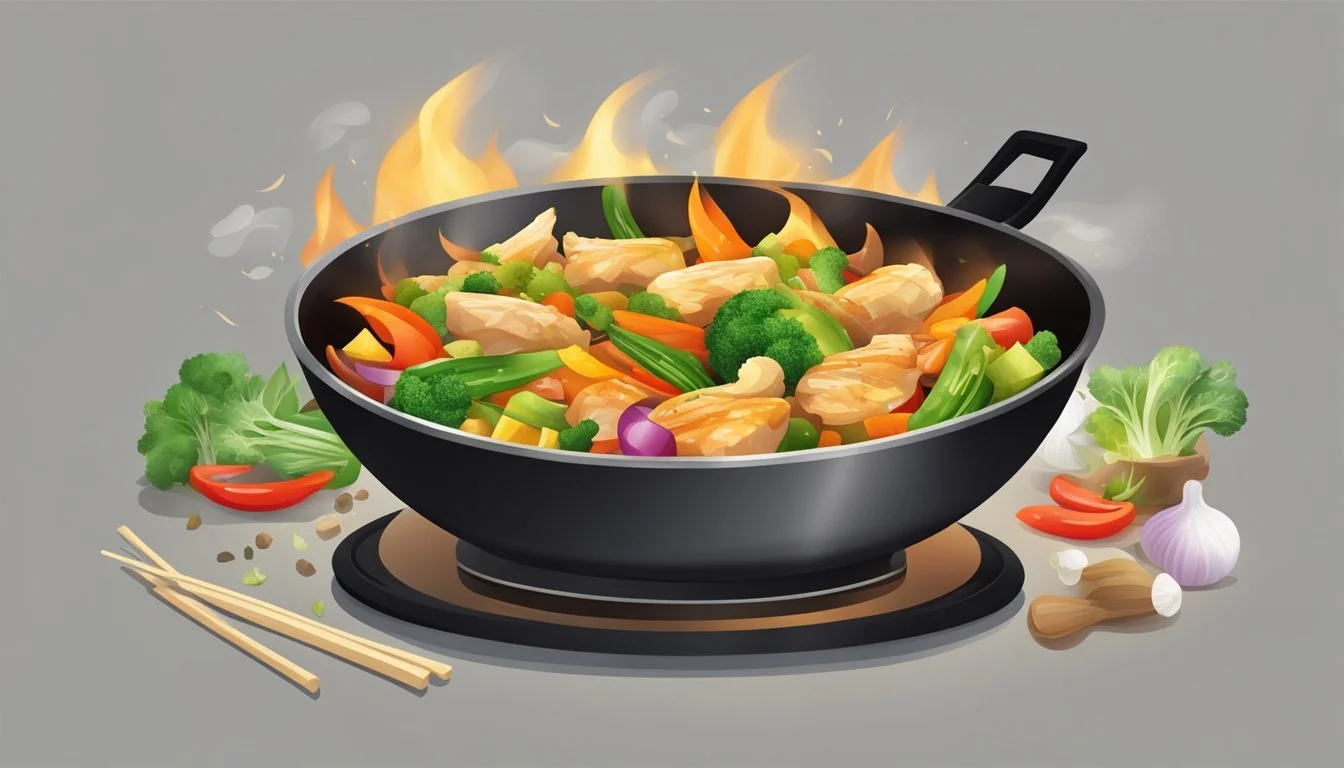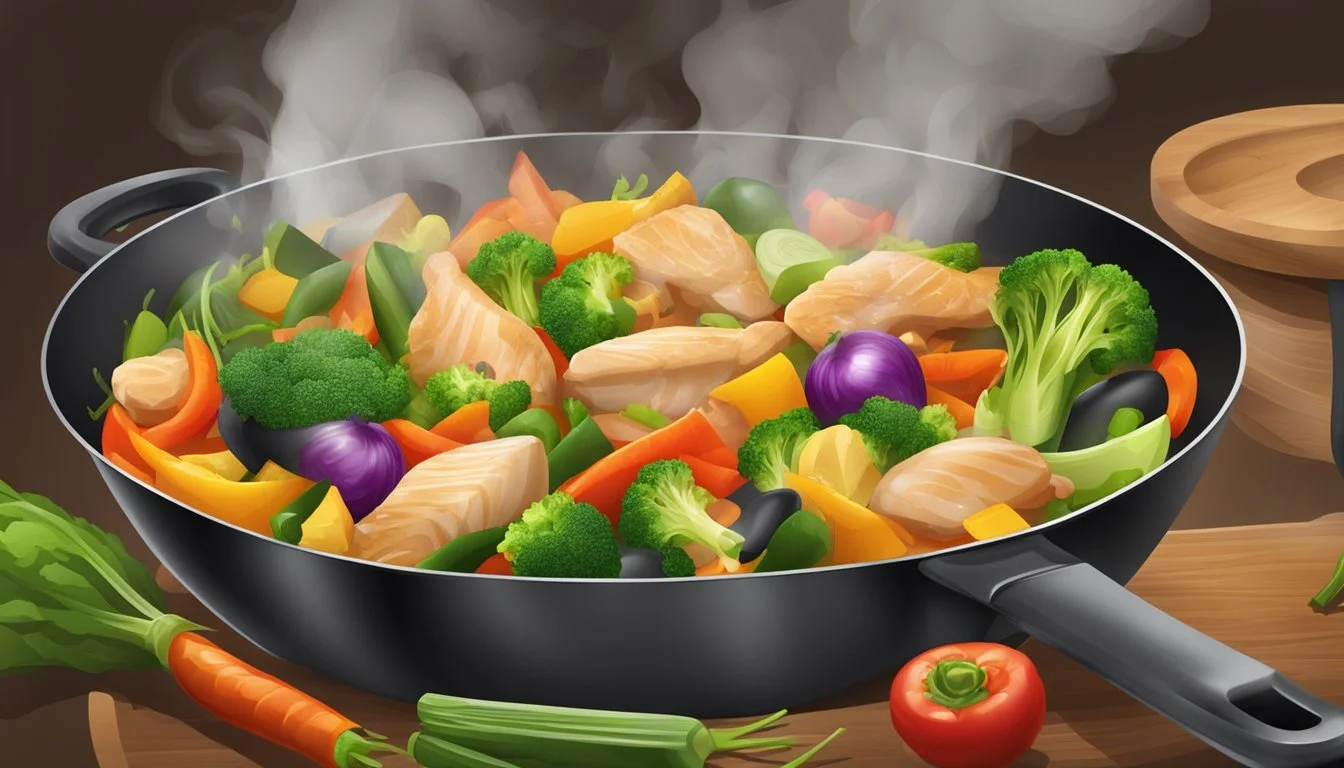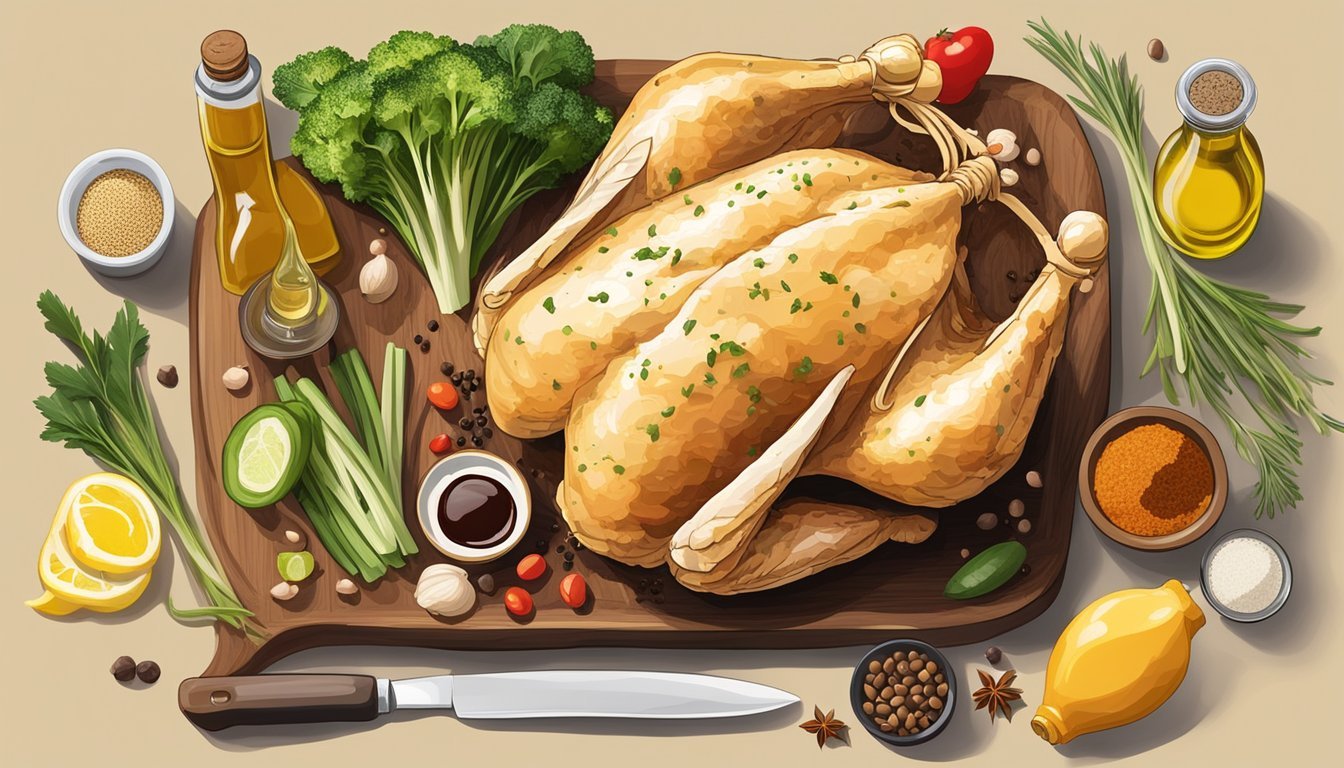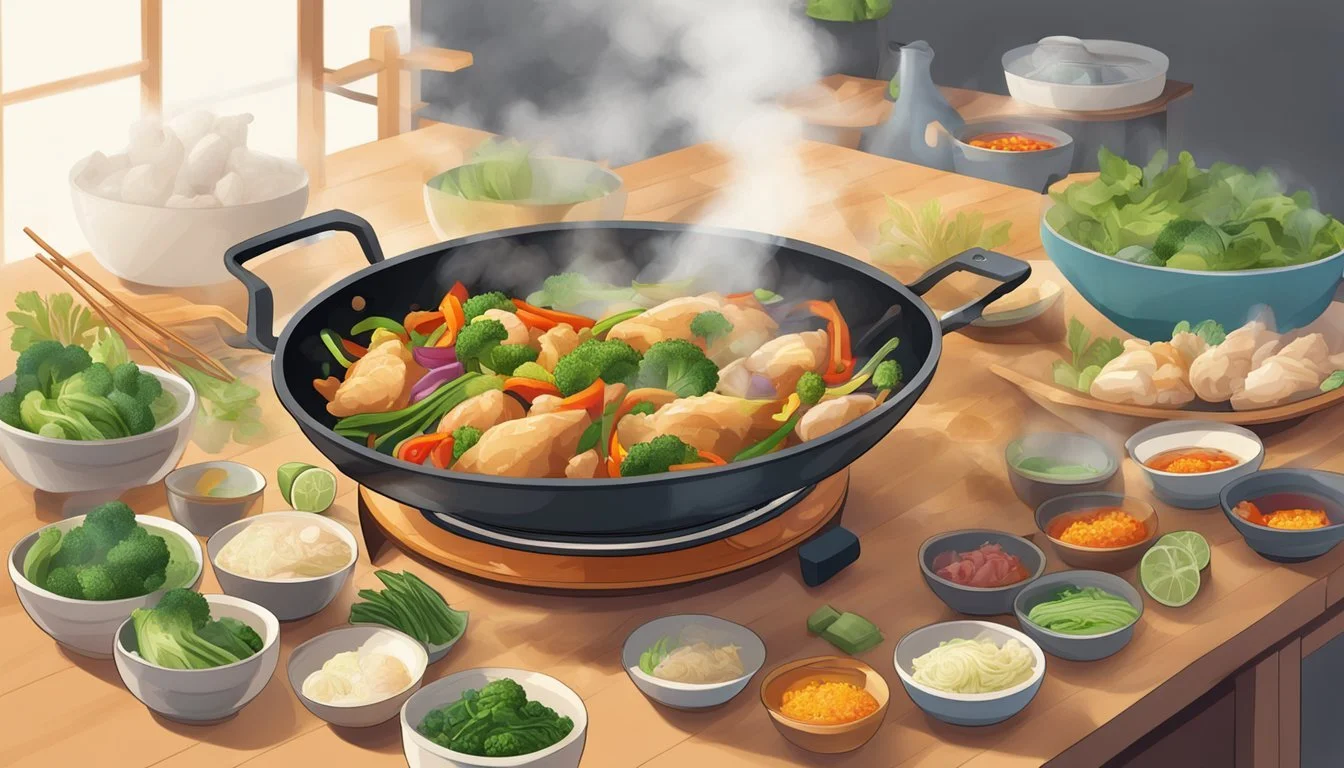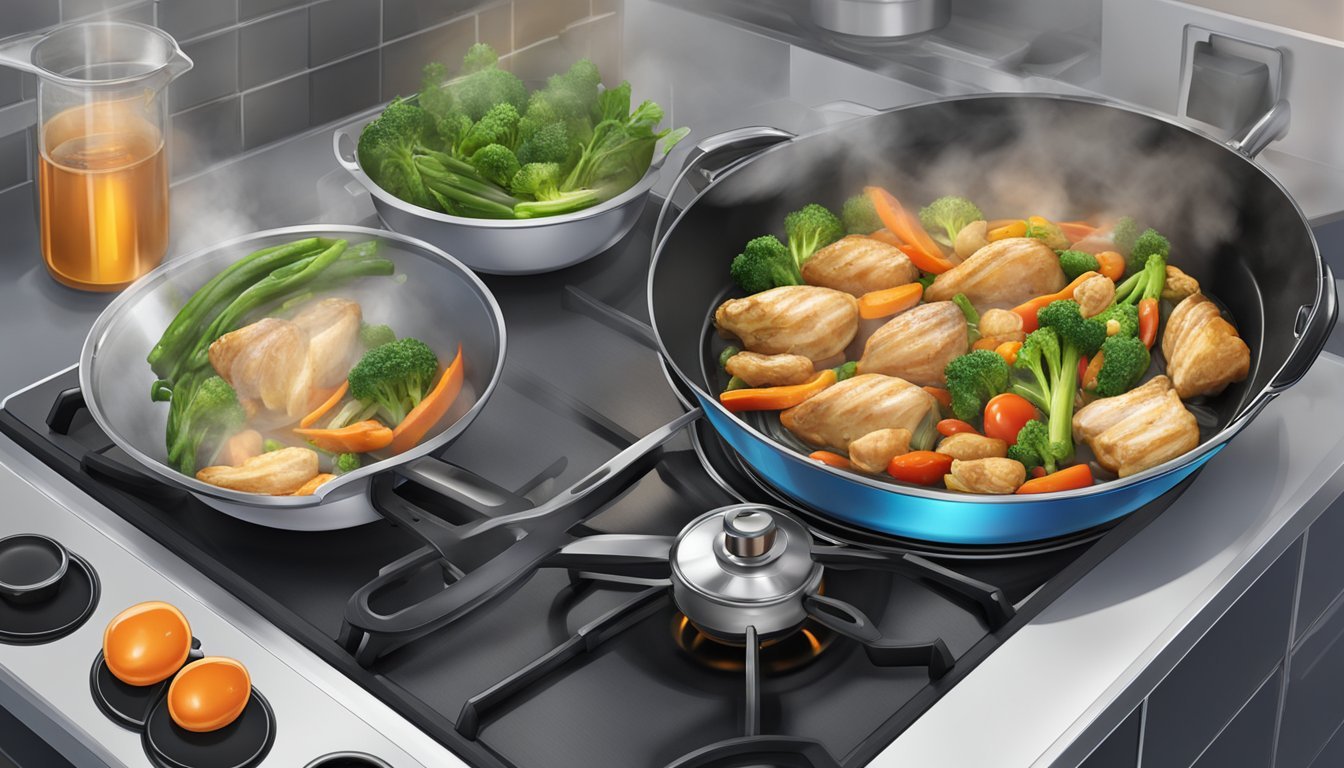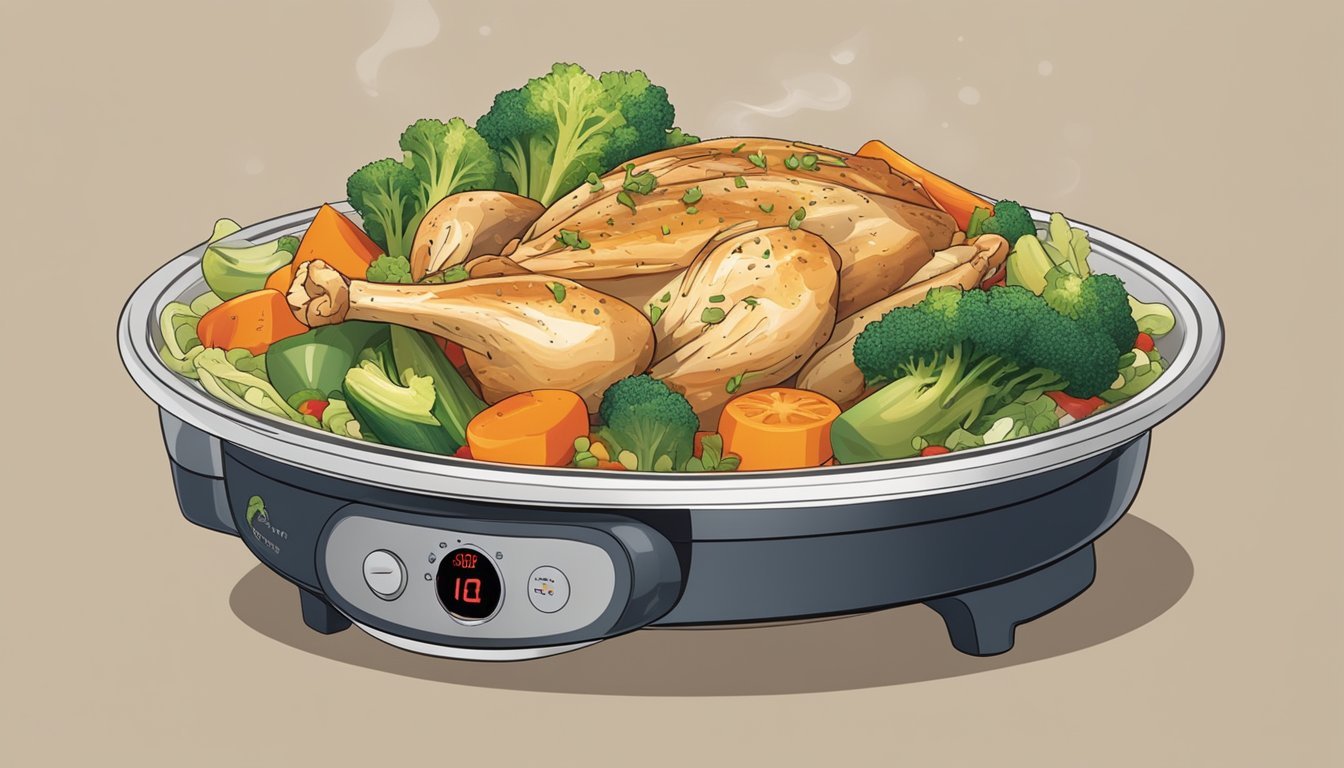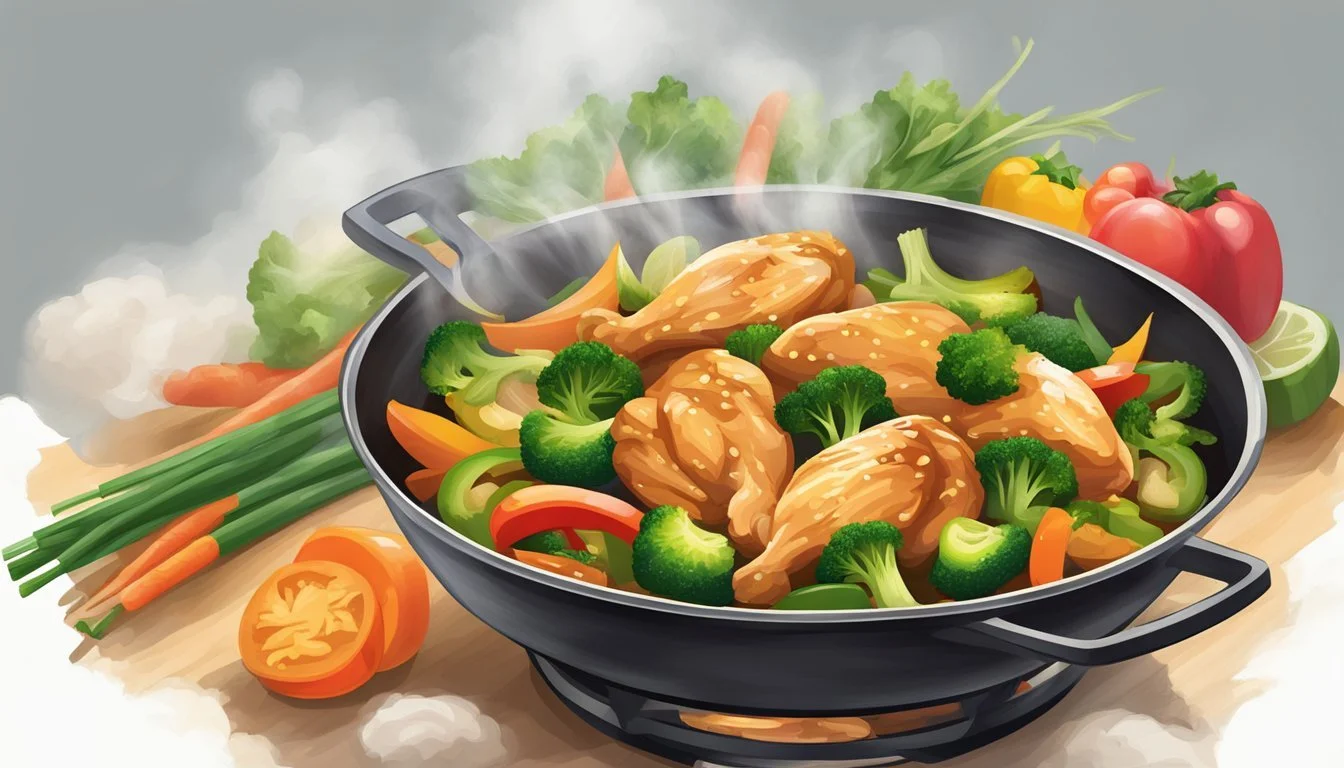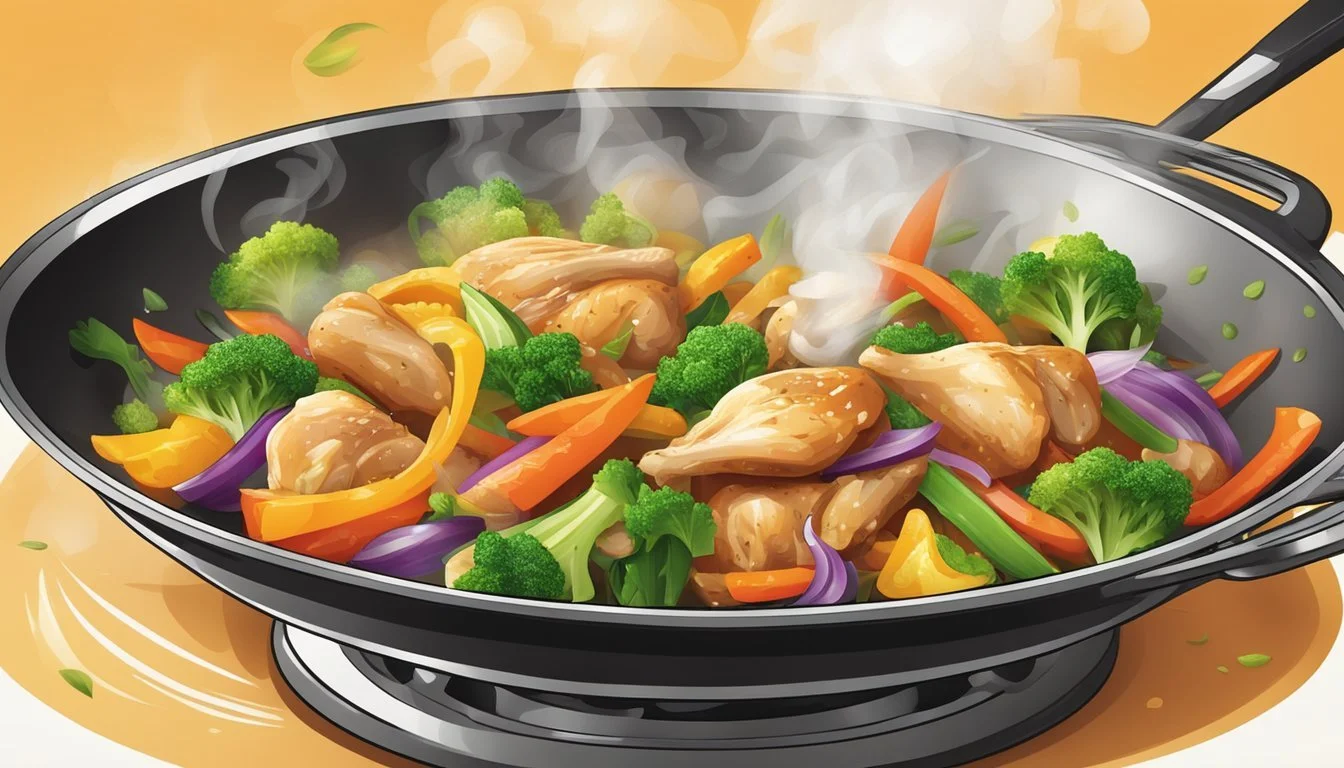How Long Does Chicken and Vegetable Stir-Fry Last?
Food Storage Tips
Chicken and vegetable stir-fry is a popular dish known for its balanced combination of protein, vegetables, and savory flavor. When considering how long this dish lasts, properly stored chicken and vegetable stir-fry can remain fresh in the refrigerator for up to four days. This time frame is pertinent to ensure both the taste and safety of the meal.
Quality ingredients and proper storage play a crucial part in maintaining the freshness of stir-fry. Storing the stir-fry in an airtight container helps preserve its texture and flavor, while also minimizing the risks of spoilage. Recognizing these aspects can help consumers enjoy their healthy and delicious stir-fry without concerns about food safety.
Understanding the factors that influence the shelf life of this dish allows for better meal planning and food handling. Whether it's a quick weeknight dinner or leftovers from a larger meal, knowing how to store chicken and vegetable stir-fry effectively ensures you can savor every bite without compromising on health or flavor.
Benefits of a Chicken and Vegetable Stir-Fry
A chicken and vegetable stir-fry is not only delicious but also packed with health benefits. Combining lean protein and various vegetables creates a balanced and nutritious meal.
Nutritional Profile
Chicken and vegetable stir-fry is rich in essential nutrients. Chicken provides a lean source of protein, which is vital for muscle repair and growth.
Vegetables in the stir-fry add a range of vitamins and minerals. For example, bell peppers are high in vitamin C, while broccoli offers a good amount of fiber and vitamin K. Using a mix of colorful vegetables can also increase antioxidant intake, aiding in overall health.
Balanced Meal with Protein and Vegetables
A stir-fry combines chicken and diverse vegetables to make a well-rounded meal. The protein from chicken helps in keeping you full for longer periods, while vegetables provide necessary fiber.
This dish is also highly customizable. By adding or substituting different vegetables, one can tailor the dish to specific nutritional needs. Additionally, using healthy cooking methods, such as stir-frying with minimal oil, can preserve nutrient density while keeping the meal low in unhealthy fats.
Essential Ingredients for a Stir-Fry
When making a stir-fry, choosing quality ingredients is crucial for a delicious and nutritious meal. Key elements include selecting the right chicken cut, incorporating a variety of vegetables, and using the best sauces and seasonings.
Choosing the Right Chicken Cut
The cut of chicken greatly impacts the texture and taste of your stir-fry. Chicken breast is a popular choice due to its leanness and tenderness when properly cooked. It should be sliced thinly against the grain to ensure a tender bite.
Alternatively, chicken thighs offer a richer flavor and remain juicy. They are slightly more forgiving if overcooked. Regardless of the cut, marinating the chicken can enhance flavor and tenderness.
Variety of Vegetables
A well-balanced stir-fry includes an assortment of colorful vegetables, each adding different textures and flavors. Common choices include bell peppers, broccoli, carrots, and snap peas. These vegetables maintain a slight crispness, adding a satisfying crunch.
Including aromatic ingredients such as garlic and ginger can elevate the overall flavor profile. It's important to cut the vegetables into uniform sizes for even cooking. Quick-cooking vegetables like spinach or bean sprouts should be added towards the end to prevent overcooking.
Selecting Sauces and Seasonings
The sauce is the heart of any stir-fry, bringing all elements together with a cohesive flavor. A basic stir-fry sauce often includes soy sauce, sesame oil, and chicken broth. Adding a touch of honey or brown sugar can balance the savory elements with a hint of sweetness.
For an authentic touch, ingredients like coconut aminos can be used as a low-sodium alternative to soy sauce. Rice wine vinegar or lime juice can introduce acidity, enhancing the dish’s complexity. Including cornstarch in the sauce helps thicken it, ensuring it coats the ingredients evenly.
By carefully selecting and preparing these essential ingredients, your stir-fry will be flavorful, satisfying, and visually appealing.
Preparation and Cooking Techniques
Proper preparation and cooking techniques can elevate a chicken and vegetable stir-fry. Key aspects include marinating the chicken, achieving the ideal stir-fry texture, and cooking vegetables to retain their crunch.
Marinating Chicken for Optimal Flavor
Marinating the chicken enhances its flavor and tenderness. A simple marinade could include soy sauce, garlic, ginger, and a touch of honey or brown sugar.
Ingredients for a Basic Marinade:
2 tablespoons soy sauce
1 tablespoon minced garlic
1 tablespoon minced ginger
1 teaspoon honey or brown sugar
Marinate the chicken for at least 30 minutes. If time allows, marinating for a few hours or overnight yields even better results. This not only infuses the chicken with flavor but also keeps it moist during cooking.
Achieving the Perfect Stir-Fry Texture
Using the right equipment and techniques ensures a perfect stir-fry texture. A wok is optimal due to its shape and heat distribution. A nonstick skillet also works well.
Key Points for Perfect Texture:
High Heat: Cook over high heat to quickly sear ingredients without overcooking.
Oil: Use oil with a high smoke point, like peanut or vegetable oil.
Stir Constantly: Constant stirring prevents sticking and ensures even cooking.
Small Batches: Cook in small batches to avoid overcrowding, which causes steaming rather than frying.
Start by heating the oil until it's shimmering. Add chicken and cook until browned, then remove and set aside.
Cooking Vegetables to Retain Crunch
Vegetables in stir-fry should be crisp-tender to provide a pleasing texture. Peppers, carrots, and broccoli are popular choices.
Steps for Perfectly Cooked Vegetables:
Cut Uniformly: Ensure all vegetables are cut to uniform sizes for even cooking.
Blanching: Blanch hard vegetables, such as broccoli, briefly in boiling water before stir-frying.
Quick Cooking: Add vegetables to the hot wok or skillet, and stir-fry for a few minutes until they reach desired doneness.
After vegetables are cooked, return the chicken to the wok. Combine all components and stir until heated through.
Using these techniques results in a delicious, well-textured chicken and vegetable stir-fry perfect for any meal.
Serving and Pairing Suggestions
Chicken and vegetable stir-fry can be enjoyed in numerous ways, and pairing it with the right accompaniments can elevate the meal. Creative presentation ideas can make the stir-fry more appealing and engaging for any occasion.
Accompaniments and Side Dishes
Chicken and vegetable stir-fry pairs excellently with several side dishes. Rice is a classic choice, whether it's steamed white rice or fluffy brown rice. Fried rice can also add an extra layer of flavor.
For those preferring a lighter option, noodles are a fantastic alternative. Rice noodles or egg noodles, stir-fried or simply boiled, complement the stir-fry well.
A fresh salad can provide a contrasting texture and refreshing taste. Consider a simple green salad with a light vinaigrette or an Asian-inspired cucumber salad with sesame dressing.
Serving the stir-fry in a wrap is another innovative approach. Use large lettuce leaves or soft tortillas to create a portable, healthy meal option.
Creative Presentation Ideas
Presentation can make a significant difference in how a dish is received. Arranging the stir-fry on a platter with colorful vegetable garnishes can make it visually appealing.
Using a bowl for individual servings can keep the meal warm longer.
For a fun twist, serve the stir-fry in hollowed-out vegetables like bell peppers or squashes, making the dish look inviting while adding to the flavor.
Consider layering the stir-fry over a bed of rice or noodles rather than mixing it all together. This method keeps the textures distinct and the presentation neat.
Garnishing with fresh herbs like cilantro or green onions can also enhance the visual appeal and add a burst of freshness.
Storing Chicken and Vegetable Stir-Fry
Proper storage of chicken and vegetable stir-fry ensures its quality and safety. Key considerations involve refrigeration practices and recognizing potential spoilage indicators.
Refrigeration Guidelines
To maximize the shelf life of chicken and vegetable stir-fry, it's crucial to refrigerate it promptly. Leftovers should be stored in an airtight container and placed in the refrigerator within two hours after cooking.
Maintain the fridge at a temperature below 40°F (4°C) to slow bacterial growth. If stored correctly, the stir-fry can last for three to four days. Beyond this period, both the quality and safety of the dish may diminish.
For longer storage, consider freezing the stir-fry. Divide it into portions and use freezer-safe containers or bags, ensuring there is minimal air inside. Clearly label each container with the date to keep track.
Identifying Signs of Spoilage
Regularly check leftovers in the fridge to prevent consuming spoiled food. Common signs of spoilage include:
Unpleasant odor: Fresh stir-fry should have a mild, appetizing aroma. Any sour, rancid, or off smell indicates spoilage.
Texture changes: The vegetables and chicken should retain their original texture. Any sliminess or excessive mushiness is a red flag.
Color alterations: Discoloration, such as grey or green patches, suggests the stir-fry is no longer safe to eat.
If any of these signs are present, it is best to discard the stir-fry to avoid foodborne illnesses. Prioritize food safety by regularly reviewing stored leftovers.
Freezing and Thawing Tips
To maximize the shelf life and maintain the quality of chicken and vegetable stir-fry, proper freezing and thawing techniques are essential. Below are the key practices for storing stir-fry in the freezer and safely defrosting it for consumption.
Proper Freezer Storage Practices
Cool Before Freezing: Allow the stir-fry to cool down completely before freezing. This step prevents ice crystals from forming, which can negatively impact texture and flavor.
Divide into Portions: Divide the stir-fry into individual meal-sized portions. This not only helps in freezing more efficiently but also makes it easier to defrost only what is needed.
Use Airtight Containers: Store the portions in airtight, freezer-safe containers or heavy-duty freezer bags. Make sure to press out as much air as possible to avoid freezer burn.
Label and Date: Clearly label each container with the date of preparation. Stir-fry can be frozen for up to two months, so keeping track of dates ensures that it is consumed within a safe period.
Safely Thawing Frozen Stir-Fry
Refrigerator Thawing: The safest method to thaw frozen stir-fry is by placing it in the refrigerator. This slow thawing process takes several hours or overnight but maintains quality and reduces the risk of bacterial growth.
Quick Thawing Methods: If a faster method is needed, the stir-fry can be thawed using a microwave. Place in a microwave-safe container and heat on a defrost setting until thoroughly thawed, stirring occasionally to ensure even thawing.
Avoid Countertop Thawing: Do not thaw stir-fry at room temperature, as it can lead to uneven thawing and increase the risk of bacterial contamination.
Reheating Tips: Once thawed, reheat the stir-fry on a stovetop or in a microwave until steaming hot. Ensure an internal temperature of 165°F (74°C) to guarantee it is safe to eat.
Reheating Leftovers Safely and Effectively
Reheating chicken and vegetable stir-fry properly is essential to maintain quality and prevent food safety issues. Here are key techniques to reheating that preserve flavor and texture while avoiding dryness and overcooking.
Best Methods to Maintain Quality
Using the stovetop is optimal for reheating stir-fry. Heat a large skillet or wok over medium-high heat with 1-2 tablespoons of oil. Add the leftover stir-fry and cook for about 1-2 minutes, stirring occasionally until heated through.
An air fryer can also keep stir-fry crispy. Set the air fryer to 350°F and place the stir-fry on a sheet of aluminum foil. Air fry for around five minutes, stirring halfway through for even heating.
Microwaving can work, but requires care. Use a microwave-safe dish, cover with a paper towel, and heat on medium power for 90 seconds. Stir and check for doneness to prevent overcooking.
Preventing Dryness and Overcooking
To avoid dryness, add moisture before reheating. Incorporate a small amount of water, broth, or sauce into the stir-fry. This helps maintain a juicy texture.
When using the microwave, cover with a damp paper towel. This creates steam and prevents the food from drying out.
Avoid overcooking by checking the stir-fry's temperature regularly. Heating in short bursts can help achieve an even warmth without making the vegetables soggy or the chicken tough.
Using fresh herbs or spices while reheating can enhance flavors and counteract any loss of taste from storage.
Understanding Food Safety
Food safety is critical in preventing foodborne illnesses when dealing with chicken and vegetable stir-fry. Proper understanding of bacterial growth, handling, and temperature controls is essential to ensure the safety of your meal.
Bacterial Growth and Prevention
Bacteria such as Salmonella and E. coli can flourish in cooked foods if they are not stored correctly. Chicken is particularly susceptible to harmful bacteria. Once cooked, the stir-fry should be cooled rapidly and kept at or below 40°F (4°C).
Avoid leaving food out at room temperature for more than two hours, as this can lead to bacterial growth. Using airtight containers can help preserve the quality and safety of the food.
Proper Handling and Temperature Controls
Handling chicken and vegetables correctly helps prevent contamination. Always wash hands, utensils, and surfaces after contact with raw chicken to avoid cross-contamination.
When reheating stir-fry, ensure it reaches an internal temperature of 165°F (74°C) to kill any harmful bacteria. Using a food thermometer can help in verifying that the proper temperature is reached. Storing the stir-fry in shallow containers allows for quicker cooling and safer storage in the refrigerator.
Maximizing Longevity and Freshness
Maintaining the freshness and extending the shelf life of chicken and vegetable stir-fry involves effective storage techniques and leveraging it for meal prep.
Effective Storage Solutions
Proper storage methods are crucial for maximizing the longevity of stir-fry. Start by transferring leftovers to airtight containers as soon as possible to minimize exposure to air and bacteria. It is essential to store the dish at a consistent temperature of 40°F (4°C) or below in the refrigerator.
Sealing it tightly with lids or using ziplock bags may help reduce moisture loss and prevent odors from other foods from affecting the stir-fry. Label the containers with the date to keep track of their freshness. Leftovers typically last 3-4 days under these conditions.
Consider freezing stir-fry if it won’t be consumed within that period. Ensure it’s properly cooled before freezing, as abrupt temperature changes can impact quality. In the freezer, stir-fry can last for up to 3 months if sealed airtight.
Utilizing Stir-Fry as Meal Prep
Stir-fry is also excellent for meal prep due to its quick cooking time and versatility. When preparing stir-fry for meals throughout the week, focus on separating ingredients that may spoil faster. For example, store cooked chicken separately from vegetables to extend freshness.
Portion meals into individual servings in microwave-safe containers. This not only makes reheating convenient but also ensures that the dish is consumed within its optimal storage period of 3-4 days.
Incorporate it into various meals, such as serving it over rice or noodles, to keep meal prep exciting and varied. Keeping a weekly meal plan can further help in managing storage times and maintaining the quality of the stir-fry.

